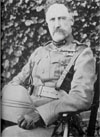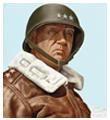Erwin, las discusiones son inútiles si pretendes hacer cambiar de opinión a quien firmemente defiende lo opuesto. Pero si tu propósito no es más que exponer un razonamiento para conocimiento público, nunca es inútil.
Recalco algunos testimonios de primera mano (siempre sin ánimo de polémica ni de molestar):
Del Major Anthony F. Milavic (USMC) hablando de casos comprobados y conocidos por tratarse no de casos de guerra, sino de accidentes en que los heridos eran militares del US Army, donde el 5.56 sólo causó pequeños orificios de entrada y de salida, sin lesiones serias:
For examples of M855 ineffectiveness, you can look at some of the live fire accidents that have occurred. One notable incident occurred in 1991, when then Lieutenant Colonel David H. Petraeus was shot in the chest by an M855 round from an M249 squad automatic weapon. He walked out of the hospital several days after the accident. Had the round performed optimally, he likely would have been killed. The author witnessed a soldier shot in the shoulder from a distance of 75 meters during a night live fire exercise and the soldier was walking around smoking a cigarette twenty minutes after the accident. A soldier in the author’s battalion had a negligent discharge with an M249 squad automatic weapon, during the initial invasion of Iraq in 2003, in a closed space of a building. Poorly instructed, he disassembled the weapon before unloading it and the weapon fired at the cyclic rate, firing approximately 100 rounds. From a distance of three meters, four soldiers where hit in the extremities and none sustained life threatening wounds. In general, the requirements for the infantry squad are that they have weapons capable of reliable incapacitation from close range to a distance of 500 meters. This capability does not exist in the current family of 5.56-mm ammunition, either with military or with commercial off the shelf ammunition, though efforts are underway to remedy the situation. Currently, the infantry squad does not have this capability
unless its designated marksman is armed with a rifle of 7.62x51 caliber. Those armed with 5.56-mm versions of the SDM-R are marginally effective and then dependent on shot placement in the small vital areas of the enemy for their effectiveness.
No sufrieron fragmentación ni yaw.
Más ejemplos. Informe de un Capitán norteamericano:
Additional observations of the impotence of the 5.56mm round soon appeared in official and professional publications. In their official briefing 'Lessons Learned in Afghanistan' dated April 2002, LTC C. Dean, USA and SFC S. Newland, USA of the U. S. Army Natick Soldier Center reported: 'Soldiers asked for a weapon with a larger round. 'So it will drop a man with one shot.'' In the October 2002 issue of the Marine Corps Gazette magazine, Capt Philip Treglia, USMC reflected on his Afghanistan experience in December 2001 by reporting that, 'the 5.56 mm round will not put a man to the ground with two shots to the chest.' Capt Treglia's men were trained to fire two bullets into an enemy's chest and if that did not knock him down, they were to shift fire to the head. This is the corrective action implemented for these Marines and many others in the Armed Forces for the impotent 5.56mm cartridge rather than equipping them with a rifle that fired a bullet with one—round knockdown power. And, as Capt Treglia reported, multiple hits with the 5.56mm bullet didn't work any better in Afghanistan than it did anytime in the past.
La visión de un LtCdr:
In a 3 March 2003 written briefing, LCdr. Gary K. Roberts, USNR recommended to RAdm. Albert M. Calland, Commander, Naval Special Warfare (NSW) Command that he upgrades his command's 5.56mm weapons to the 6.8mm cartridge. That briefing, entitled, 'Enhancement of NSW Carbine & Rifle Capability,' opens by observing:
Recent combat operations have highlighted terminal performance problems, generally manifested as failures to rapidly incapacitate opponents, during combat operations when M855 62gr. 'Green Tip' FMJ is fired from 5.56mm rifles and carbines. Failure to rapidly incapacitate armed opponents increases the risk of U.S. forces being injured or killed and jeopardizes mission success
Relato de un ataque suicida y de la incapacidad del 5.56 de hacer su trabajo (al final sólo un disparo del 45ACP pudo acabar con la amenaza):
On 12 September 2003, in Ar Ramadi, Iraq elements of the 3rd Battalion, 5th Special Forces Group engaged enemy forces in a firefight. An insurgent was struck in the torso by several rounds of 5.56mm ammunition from their M—4 carbines (this is the current shortened version of the M—16 Service Rifle). He continued to fire his AK—47 and mortally wounded MSgt Kevin N. Morehead, age 33, from Little Rock, Arkansas. The engagement continued with the same insurgent surprising SFC William M. Bennett, age 35, from Seymour, Tennessee from a hiding place and killing him instantly with a three—round burst to the head and neck. SSgt Robert E Springer, threw away his M—4 carbine, drew an obsolete WWI/WWII vintage .45 caliber pistol and killed the insurgent with one shot. A close inspection of the enemy's corpse revealed that he had been hit by seven 5.56 mm rounds in his torso. Also, in this engagement, these soldiers were provided with a commercially produced 5.56mm round of 77—grain weight vice the 62—grain bullets in use by general—purpose forces. Obviously, the larger 5.56mm round was of little consequence.
Llamo la atención sobre el hecho de que son opiniones de mandos que estuvieron en primera línea. No son aficionados. Su trabajo es ganar guerras. Y no creo que nadie dude de su experiencia.
Si las lesiones mostradas en gelatina hubieran sido trasladables al ser humano, ese insurgente hubiera sido anulado con el primer impacto.
Me alegra ver que no estoy sólo en la duda de que las características anunciadas por Colt en su día con este tipo de proyectil, no parecen plasmarse en la práctica más allá de los bloques de gelatina de 50cm.
Saludos.



















